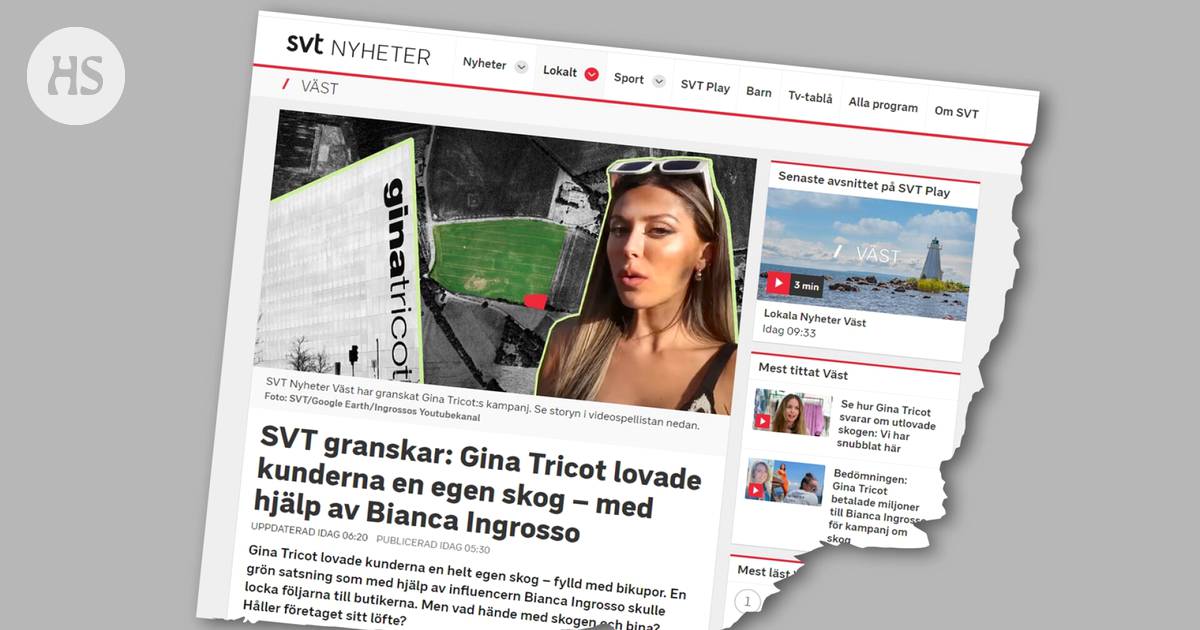Greenwashing|The company spent about 7,000 euros to plant the mullet. The social media influencer who marketed the responsibility campaign received many times the amount, says SVT.
Read the summary
The summary is made by artificial intelligence and checked by a human.
Gina Tricot’s sustainability campaign is talking in Sweden.
In the campaign, 503 trees were planted in a Danish field.
The professor of forest ecology criticized the small scale of the campaign.
Fashion chain Gina Tricot’s sustainability campaign has caused an uproar in Sweden. Swedish public broadcasting company SVT revealed that Gina Tricot’s promise to plant the company’s own Gina Tricot forest meant in practice about five hundred trees planted in a Danish field.
According to the professor of forest ecology, an area of about a quarter of a hectare does not even meet the definition of a forest. A quarter hectare is 2,500 square meters.
“This smells like green laundry,” he says Matt’s Lindbladhprofessor of forest ecology at the Swedish Agricultural University, according to SVT.
Gina Tricot’N the partner has planted the seedlings in the field in Kalundborg, Denmark. According to Lindbladh, afforestation is profitable in itself, but a company the size of Gina Tricot is allowed to expect a much larger investment.
An area of at least half a hectare is considered a forest. A generous 500 taints is about half of this. Gina Tricot spent 80,000 kroner, or about 7,000 euros, for forest plantings.
Customers could participate in the campaign by paying an extra ten crowns with their purchase. The money had to be used to build beehives in the forest. According to SVT’s report, Gina Tricot bought two beehives.
Metsitysprojekti was a key part of Gina Tricot’s wider sustainability campaign, which was marketed by a social media influencer Bianca Ingrossolle was paid for the one-year cooperation, according to the calculation used by SVT, 5–10 million kroner, or about 440,000–880,000 euros.
Ingrosso has 1.4 million followers on Instagram, most of whom are young women, i.e. the fashion chain’s most important customer base.
Ingrosso says on her Instagram account that Gina Tricot promotes biodiversity, cleans air and water and reduces carbon dioxide emissions.
“I think this is absolutely fantastic,” says Ingrosso in a video found on SVT’s website.
Fast fashion brands are increasingly challenged by the sustainability of fast-circulating cheap fashion. The production of many textile fibers involves environmental problems, and the recycling of clothes is weak.
However, corporate responsibility campaigns have not always hit the mark.
A year ago, a newspaper The evening paper revealed that, contrary to promises, the used clothes collected by H&M often ended up as problem waste in developing countries.
H&M has tried to improve its reputation for responsibility and created a cleaner conscience for its customers by offering the opportunity to return used clothes to the store. According to the company, the returned clothes are mainly sold on.
Aftonbladet attached small transmitters to the items of clothing returned to the stores’ recycling boxes, which were used to track the clothes. Their tracks often led to poor countries.
A large part of the clothes ends up in the sea and elsewhere in nature. Garment waste imported from Western countries is, for example, a significant environmental problem in Ghana, Africa.
Correction 11.6. 9:01 p.m.: Ingress previously reported incorrectly that about 80,000 euros were used for planting. The correct amount is 80,000 kroner, or about 7,000 euros.
